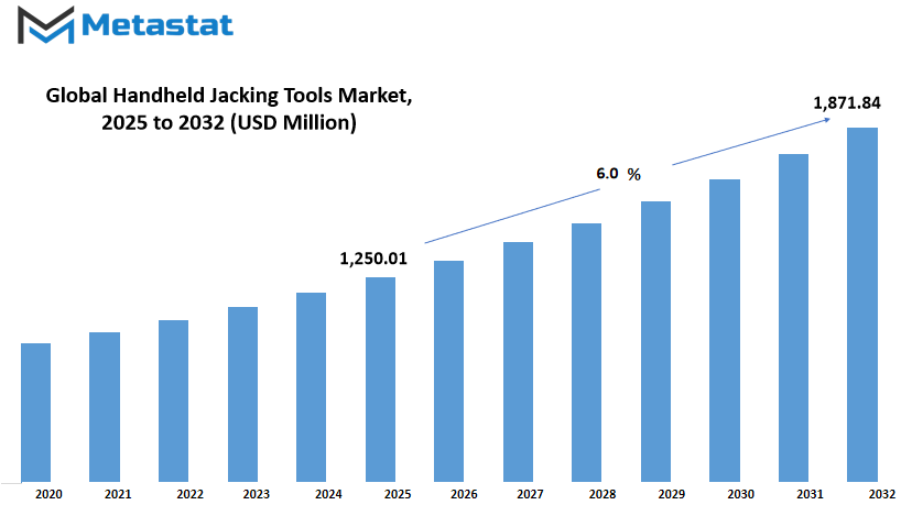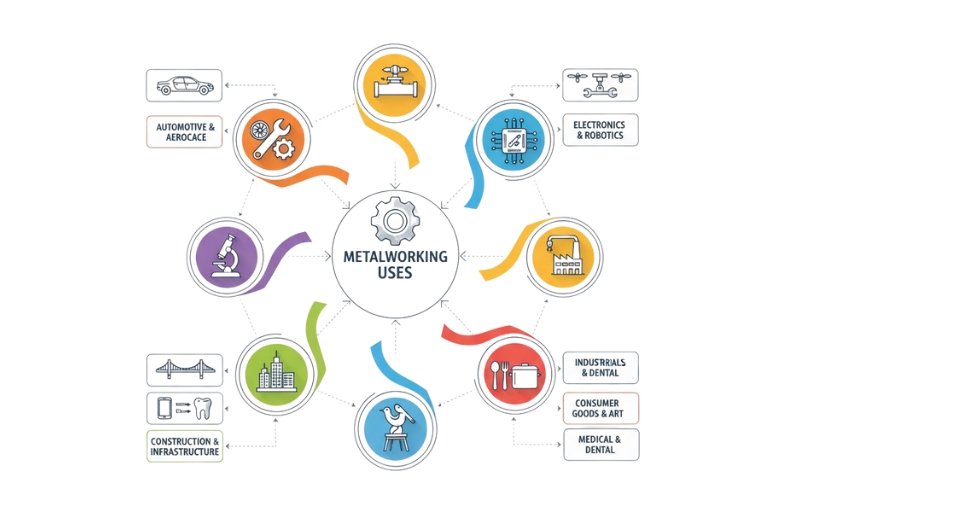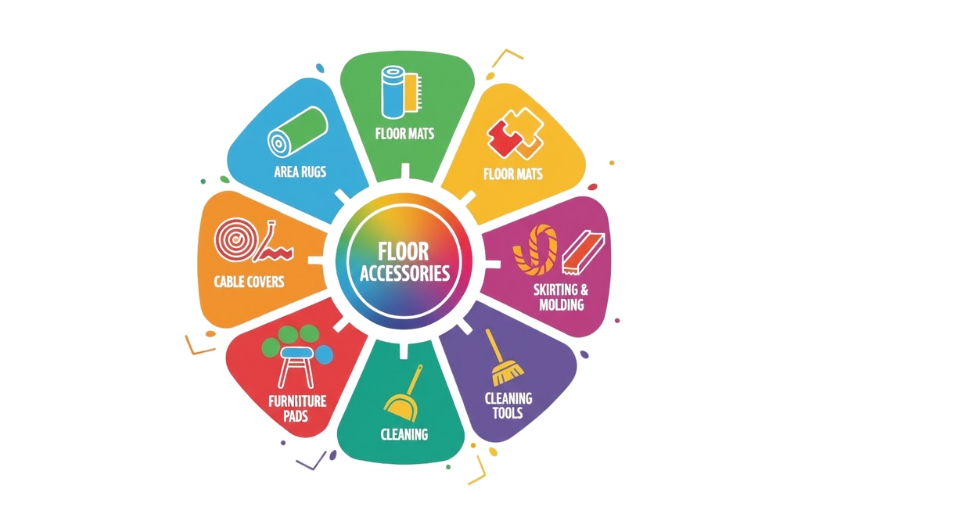MARKET OVERVIEW
The global handheld jacking tools market and business will continue to establish a niche area of mechanical devices that assist in lifting, locating, and temporary supporting tasks across industries. The market will not be confined to classic automobile applications but will progressively increase its relevance in construction sites, industrial repairs, utility services, and rescue applications. The scope of this market will stretch far beyond the mere concept of portable jacks; it will encompass a series of well-designed tools intended to introduce mobility, safety, and precision into scenarios where larger equipment cannot be used.
The market will set itself apart by concentrating on use in situations where portability and hand operation are still key. In contrast to heavy lifting equipment that involves the need for fixed installation or high power supplies, handheld jacking tools will have the benefit of being portable, flexible, and of use in various site conditions. Their worth will not only be as a weight lifter, but as a responsive tool for the professional to complete tasks in a timely manner without reliance on outside power infrastructure. This will ensure the definition of the market closely related to the theme of independence and flexibility in mechanical operations.
There will be a greater insight into the global handheld jacking tools market to reveal how it overlaps with safety requirements and changing workplace trends. Since industries will turn towards reducing downtime and increasing the efficiency of workers, handheld jacking tools will become key tools that cut down on the use of complex set-ups. The equipment's portability will also render it applicable in rural and remote operations where other types of lifting solutions would be impractical. By offering durability alongside portability, the market will carve a niche for itself as a crossover between manpower and heavy machinery.
The industry will not just be defined by its direct use but also by how it fits into larger industrial supply chains. Producers, wholesalers, and consumers will determine the nature of the market via their patterns of adoption, design engineering, and maintenance needs. Thus, the global handheld jacking tools market will be more than a category of tools—it will be an indispensable support system for operations requiring both speed and reliability.
Forward, the definition of this market will persist to evolve since materials technology and ergonomic design will shape product development. Handheld jacking tools will increasingly respond with a blend of strength and light construction so that future operators will enjoy higher portability without sacrificing load-bearing capability. In addition, since industries will focus more on lowering workplace risks, the technology behind these tools will improve to prioritize operator safety, further establishing their role in varying work environments.
In conclusion, the global handheld jacking tools market will be characterized not only by the tools themselves, but by the increasing function they will serve across industries that prioritize portability, reliability, and efficiency. This market will transcend being a segment of lifting devices, becoming a key industry that guarantees professionals globally will have reliable solutions whenever mobility and strength need to coincide.
Global handheld jacking tools market is estimated to reach $1,871.84 Million by 2032; growing at a CAGR of 6.0% from 2025 to 2032.

GROWTH FACTORS
The global handheld jacking tools market is likely to experience steady growth in the next few years as industries, automotive services, and infrastructure development projects are increasingly appreciating the need for dependable lifting solutions. One of the most powerful drivers of this demand is the increasing demand for automotive repair and roadside assistance services. As more cars fill the roads of the globe, cases calling for instant lifting solution will keep growing, and handheld jacking equipment will become an indispensable component of repair kits and service procedures. They are lightweight and convenient to use, an advantage that makes them a must-have option among mechanics, motorists, and service technicians who require speedy and efficient lifting instruments in emergency circumstances.
The other key factor driving this market is the growth of infrastructure and increased emphasis on machine maintenance. With increasing urbanization and industrial complexes extending, safe and efficient lifting equipment becomes ever more significant. Construction activities depend on properly serviced machines, and handheld jacking tools will find more applications in rapid repair, tuning, and maintenance of equipment. This increasing reliance on robust and simple-to-use tools will promote further usage in various sectors. But the global handheld jacking tools market also has some limitations.
Safety issues are a major challenge, since misuse of the tools may cause accidents or injury. This generates uncertainty in some users and can hinder market penetration, particularly in regions where hard safety rules are implemented. Besides, the presence of substitute lifting equipment in the form of hydraulic lifts and electric hoists lessens the overall demand for handheld tools. People tend to seek sophisticated, fully automated equipment, which makes it more challenging for conventional handheld tools to reign supreme in competitive environments. In spite of all these limitations, the market is very promising for potential expansion. The entry of ergonomic shapes and battery-powered jacking tools is a major leap forward. These new technologies will enhance safety for the users, decrease the amount of force required to handle the tools, and present them as more suitable choices for both professionals and general users. As technology keeps pushing the performance level higher, handheld jacking tools are poised to be smarter, lighter, and more efficient, and thus attract more industries.
In the future, the global handheld jacking tools market will be further facilitated by the ongoing development of design and power solutions. By mitigating safety issues and adding features aligned with contemporary requirements, producers can further cement their position and open up new fields of demand. The future will involve these tools becoming an even more worthwhile component of automotive service, construction work, and machinery maintenance, refashioning the market as a realm of innovation and functionality.
MARKET SEGMENTATION
By Type
The global handheld jacking tools market is expected to move forward steadily as industries look for more efficient and reliable lifting solutions. These tools are widely used in construction, automotive, maintenance, and several heavy-duty applications, where the demand for precision and safety continues to rise. As businesses and individuals aim to improve work efficiency, the adoption of advanced lifting equipment will become more common. The market is not only driven by present needs but will also shape itself around new technologies and smart designs that can reduce human effort while delivering higher levels of safety.
By type, the global handheld jacking tools market is further segmented into Manual Handheld Jacks, Hydraulic Handheld Jacks, Screw Jacks, and Others. Manual handheld jacks are still popular due to their affordability and ease of use, making them suitable for smaller tasks. Hydraulic handheld jacks, however, are seeing increasing preference because they require less physical strength and can lift heavier loads with greater control. Screw jacks remain relevant for applications where stability and gradual adjustment are necessary. The “Others” category may include specialized jacks with unique features designed to fit niche needs, and this segment will likely expand as new innovations arrive.
The future of the global handheld jacking tools market will see greater integration of lightweight materials and ergonomic designs, making these tools easier to transport and operate. Companies will invest in creating jacks that last longer and require less maintenance, addressing concerns about cost and durability. In addition, with industries moving toward digital monitoring, even handheld tools may adopt simple smart features, such as load indicators or sensors that warn against unsafe use. These developments will help reduce workplace accidents and encourage wider adoption.
Growing construction activities, especially in developing regions, will ensure a steady rise in demand. The automotive repair sector will also play a strong role, as the number of vehicles on the road continues to increase and regular maintenance remains necessary. In the coming years, consumer expectations will lean toward tools that save time and reduce physical strain. Manufacturers who can deliver practical, safe, and innovative products will have an advantage in shaping the next phase of the global handheld jacking tools market.
As industries advance, the need for tools that combine strength, safety, and convenience will remain central. The global handheld jacking tools market will not only respond to these needs but also influence how people approach lifting tasks in both professional and personal settings, ensuring a future where efficiency and safety go hand in hand.
By Application
The global handheld jacking tools market is gaining attention as industries and households increasingly look for equipment that is practical, portable, and capable of improving efficiency. These tools are designed to provide support in lifting, adjusting, and stabilizing heavy or awkward objects, and their demand is expected to rise as people focus more on safety and convenience. With growing urban development, the need for reliable and compact lifting devices will expand, creating opportunities for manufacturers to innovate and provide solutions that meet a wide range of needs.
By application, the global handheld jacking tools market is divided into several categories, each reflecting how diverse and adaptable these tools have become. In construction and renovation, they will be used for tasks such as adjusting beams, aligning panels, and supporting temporary structures. The constant growth of infrastructure projects means that these tools will not only save time but also reduce labor strain. In furniture assembly, they will help workers and even individual users handle heavy sections more easily, supporting the trend toward flat-pack and modular furniture design.
Industrial maintenance is another important segment, where these tools will assist technicians in lifting or shifting machinery parts for inspection and repair. As industries rely more on automation and heavy equipment, tools that allow precise adjustments without large-scale machines will become essential. In automotive repair, mechanics will continue to depend on handheld jacks for lifting vehicles or components, and as electric vehicles expand, lighter and more specialized versions may be introduced.
Door and window installation will also benefit, since these tools will allow exact positioning without risking damage to materials. In DIY and home improvement, the market will see strong growth as more individuals take on personal projects. Handheld jacks that are affordable, easy to operate, and safe will be appealing to households. Carpentry and woodworking will rely on them for holding pieces in place during cutting, joining, or finishing, while equipment installation in both commercial and residential settings will demand tools that make precise alignment possible with less manpower.
Looking to the future, the global handheld jacking tools market will evolve with designs that focus on lighter materials, higher load capacity, and integration with smart features for accuracy and monitoring. Manufacturers who respond to user needs with durability, ergonomics, and efficiency will shape the direction of this market. As industries and households continue to prioritize productivity and safety, these tools will remain a vital part of work processes, offering both versatility and long-term value.
By End User
The global handheld jacking tools market is expected to witness steady growth as industries and individuals continue to rely on compact lifting and positioning equipment for various tasks. These tools are designed to offer efficiency, safety, and ease of use, which will remain important factors for future adoption. By looking ahead, it becomes clear that the demand for such equipment will not only come from professionals but also from homeowners and retail customers who value convenience and durability.
By end user, the market is divided into several groups that show how wide the applications of these tools have become. Professional tradespeople such as contractors, installers, and carpenters will continue to depend on handheld jacking tools for daily work. Their need for reliable equipment that can handle repeated use will keep driving innovation, particularly in designs that are lighter, stronger, and easier to carry to job sites. Industrial maintenance workers will also play a key role in shaping the market, as factories and production facilities require constant equipment upkeep. Tools that improve efficiency and reduce downtime will be highly valued in this area.
DIY homeowners are another group contributing to the expansion of the global handheld jacking tools market. With more people taking on their own projects, the need for safe and easy-to-use tools is rising. In the future, designs that combine user-friendly features with affordability will attract even greater interest from this segment. Furniture manufacturers will continue to look for jacking tools that help with lifting and assembling heavy pieces with precision. As demand for custom and ergonomic furniture grows, the reliance on specialized tools will increase.
Automotive technicians also remain a strong market segment. Cars and other vehicles require constant servicing, and handheld jacking tools that ensure safety and speed in lifting will remain essential. In addition, building maintenance teams will need these tools for structural adjustments and repair work, where portability and reliability matter most. Retail customers, while not heavy users, will add to the market through occasional purchases, especially as tools become more widely available through online platforms and hardware stores.
Looking ahead, the global handheld jacking tools market will benefit from advances in materials, energy-efficient designs, and even smart technology integration. Tools that can monitor load, provide safety alerts, or connect with digital platforms may become standard. As end users continue to seek tools that save time, reduce effort, and ensure safety, manufacturers will respond with solutions that balance cost with innovation, making the market both resilient and forward-looking.
|
Forecast Period |
2025-2032 |
|
Market Size in 2025 |
$1,250.01 million |
|
Market Size by 2032 |
$1,871.84 Million |
|
Growth Rate from 2025 to 2032 |
6.0% |
|
Base Year |
2024 |
|
Regions Covered |
North America, Europe, Asia-Pacific Green, South America, Middle East & Africa |
REGIONAL ANALYSIS
The global handheld jacking tools market is expected to witness steady growth in the years ahead as demand for efficient and portable lifting solutions continues to rise. These tools are widely valued in construction, automotive repair, and various industrial applications where mobility and precision are crucial. Their compact design makes them useful for tasks that larger machines cannot handle with ease. As industries push for tools that save both time and effort, the market will benefit from constant innovation and technological upgrades aimed at improving safety, durability, and user convenience.
From a geographical perspective, the global handheld jacking tools market is spread across North America, Europe, Asia-Pacific, South America, and the Middle East & Africa. In North America, the U.S., Canada, and Mexico are the key contributors. The region will likely maintain a strong position because of its advanced infrastructure development and the steady demand from the automotive and industrial sectors. In Europe, countries such as the UK, Germany, France, and Italy are expected to show consistent growth, with the Rest of Europe also contributing. The region’s focus on upgrading construction equipment and encouraging the use of reliable tools will support expansion.
Asia-Pacific, which includes India, China, Japan, South Korea, and the Rest of Asia-Pacific, will play a vital role in shaping the future of the global handheld jacking tools market. Rapid industrialization, urban development, and the growth of automotive manufacturing across these nations will drive adoption at a higher pace compared to other regions. South America, with Brazil, Argentina, and the Rest of South America, will gradually strengthen its position as infrastructure and industrial activity gain momentum. Meanwhile, the Middle East & Africa, divided into GCC Countries, Egypt, South Africa, and the Rest of Middle East & Africa, will witness demand as construction and energy projects expand.
Looking forward, the market will evolve in line with technological advancements. The integration of lightweight materials, digital monitoring features, and ergonomic designs will make these tools even more efficient. Sustainability will also become an important focus, as manufacturers will seek ways to reduce environmental impact while maintaining high performance. The growing emphasis on workplace safety and the need for tools that can operate in challenging conditions will push companies to innovate further. With industries worldwide focusing on efficiency and reliability, the global handheld jacking tools market will remain a crucial segment of the tool industry and continue to grow as new opportunities emerge across different regions.

COMPETITIVE PLAYERS
The global handheld jacking tools market is moving toward a future where efficiency, precision, and durability will remain central to growth. As industries ranging from construction to automotive repair continue to expand, the demand for reliable lifting and positioning tools will increase steadily. These tools are not only used for heavy-duty lifting but also for tasks that require accuracy and safety, making them essential in professional and even do-it-yourself projects. With more attention being placed on safety standards and performance, companies that can innovate while keeping products user-friendly will stay ahead.
Competitive players in this market already understand how important innovation will be for long-term success. Viking Arm AS has been recognized for designing versatile tools that appeal to both professionals and hobbyists. Stanley Black & Decker, Inc. and DEWALT continue to benefit from global brand recognition, with strong reputations for durability and performance. Wolfcraft GmbH and BESSEY Tool GmbH & Co. KG are known for their precision engineering, serving markets where accuracy and long-term reliability will be highly valued. Silverline Tools and Irwin Tools, with their wide distribution networks, ensure accessibility for a broad customer base, which will matter more as global demand grows.
Other significant competitors, such as Jack Sealey Ltd., Torin Inc., and Metro Hydraulic Jack Co., have carved out strong positions by offering specialized products for both industrial and personal use. ENERPAC, Joyce/Dayton Corp., and Thomson Industries, Inc. contribute with advanced lifting solutions that highlight engineering strength and adaptability. These companies will likely continue refining their products to align with the changing needs of industries that rely heavily on manual lifting tools.
The future of the global handheld jacking tools market will also depend on how well these players respond to trends in ergonomics, sustainability, and digital integration. As technology advances, there will be opportunities to improve materials, reduce weight, and enhance durability without compromising strength. Companies that invest in research and development will be positioned to lead, as customers will favor products that save time and reduce strain during use.
In the years ahead, competition among these leading companies will not only push for better quality but also drive innovation that shapes the entire industry. The focus will remain on providing dependable solutions that make lifting, positioning, and securing easier, safer, and more efficient for users worldwide.
Handheld Jacking Tools Market Key Segments:
By Type
- Manual Handheld Jacks
- Hydraulic Handheld Jacks
- Screw Jacks
- Others
By Application
- Construction & Renovation
- Furniture Assembly
- Industrial Maintenance
- Automotive Repair
- Door & Window Installation
- DIY/Home Improvement
- Carpentry & Woodworking
- Equipment Installation
By End User
- Professional Tradespeople (Contractors, Installers, Carpenters)
- Industrial Maintenance Workers
- DIY/Homeowners
- Furniture Manufacturers
- Automotive Technicians
- Building Maintenance Teams
- Retail Customers
Key Global Handheld Jacking Tools Industry Players
- Viking Arm AS
- Stanley Black & Decker, Inc.
- Wolfcraft GmbH
- BESSEY Tool GmbH & Co. KG
- Silverline Tools
- Irwin Tools
- DEWALT
- Jack Sealey Ltd.
- Torin Inc.
- Metro Hydraulic Jack Co.
- ENERPAC
- Joyce/Dayton Corp.
- Thomson Industries, Inc.
WHAT REPORT PROVIDES
- Full in-depth analysis of the parent Industry
- Important changes in market and its dynamics
- Segmentation details of the market
- Former, on-going, and projected market analysis in terms of volume and value
- Assessment of niche industry developments
- Market share analysis
- Key strategies of major players
- Emerging segments and regional growth potential








 US: +1 3023308252
US: +1 3023308252






